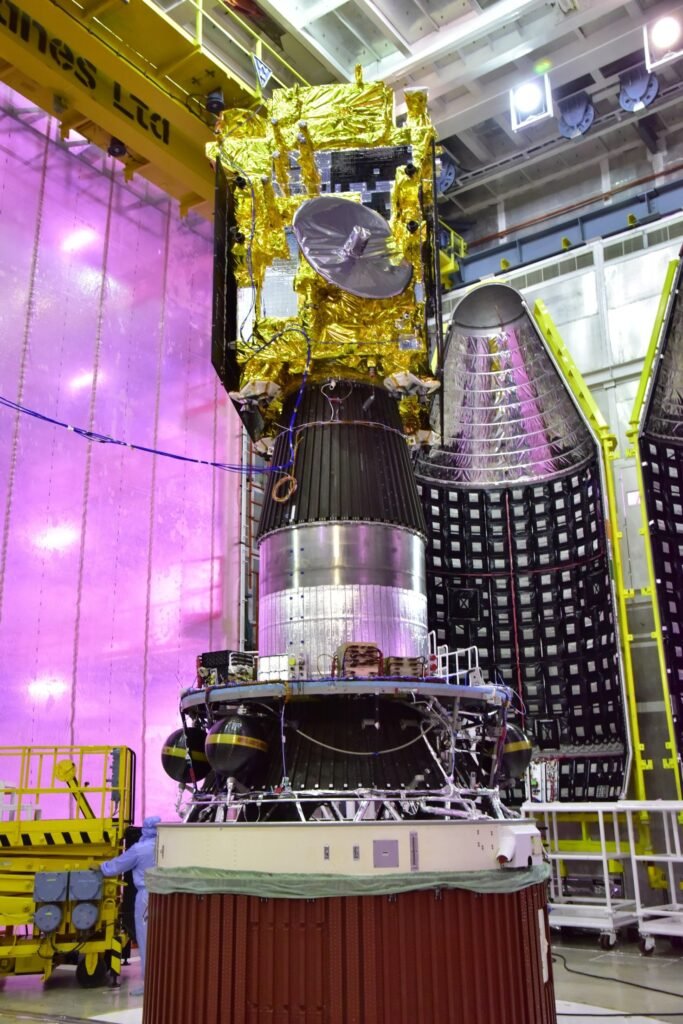India’s Aditya-L1
On January 6, 2024, the Indian Space Research Organisation (ISRO) achieved a significant milestone in space exploration with the successful Halo-Orbit Insertion (HOI) of its solar observatory spacecraft, Aditya-L1. This remarkable feat marks a critical phase in the mission, positioning the spacecraft in a periodic Halo orbit around the Sun-Earth Lagrange point L1. The Aditya-L1 mission aims to observe and understand the chromospheric and coronal dynamics of the Sun continuously, providing invaluable insights into solar phenomena.
What is a Halo Orbit?
A Halo orbit is a unique three-dimensional orbit involving the Sun, Earth, and a spacecraft. In the case of Aditya-L1, this periodic orbit is located approximately 1.5 million km from Earth, ensuring a continuous view of the Sun. The orbital period of Aditya-L1 is about 177.86 Earth days, providing a stable platform for long-term solar observations. The choice of a Halo orbit offers several advantages, including a smooth Sun-spacecraft velocity change suitable for helioseismology, positioning outside Earth’s magnetosphere for “in situ” sampling of the solar wind, and unobstructed, continuous observation of the Sun.

The HOI Process:
The Halo-Orbit Insertion process commenced as Aditya-L1 crossed the XZ plane in the Sun-Earth-L1 rotating system with the required orbital state. The insertion maneuver was crucial to nullify the X and Z velocity components and attain the required Y-velocity in the L1 rotating frame for the specified Halo orbit. The targeted parameters for Aditya-L1’s Halo orbit include Ax: 209200 km, Ay: 663200 km, and Az: 120000 km.
This complex maneuver demanded precise navigation and control, involving constant monitoring and adjustments to the spacecraft’s speed and position using onboard thrusters. The success of the HOI not only underscores ISRO’s capabilities in executing intricate orbital maneuvers but also instills confidence for future interplanetary missions.
Aditya-L1’s Extraordinary Journey: Launched on September 2, 2023, aboard PSLV-C57 from SDSC SHAR, Aditya-L1 embarked on an extraordinary journey towards the Sun-Earth-L1 Lagrange point. Initially placed in an elliptical parking orbit (EPO) of 235.6 km by 19502.7 km, the spacecraft progressively increased its orbital size using the onboard propulsion system. Five liquid engine burns (LEB) during the Earth orbit phase raised the apogee of the EPO, leading to the trans-L1 injection (TL1I) maneuver, a critical step in reaching the target L1 Halo orbit.
To minimize incremental velocity addition and reduce exposure to high radiation Van Allen belts, two corrective burns (TCM-1 and TCM-2) were conducted on October 5, 2023, and December 14, 2023, respectively. The spacecraft then entered a cruise phase lasting approximately 110 days, preparing for the Halo-Orbit Insertion targeted on January 6, 2024.
International Collaboration and Payloads:
The Aditya-L1 mission is a collaborative effort, with the spacecraft designed and realized at the UR Rao Satellite Centre (URSC) and contributions from various ISRO centers. The scientific payloads onboard Aditya-L1 were developed by Indian scientific laboratories, including IIA, IUCAA, and ISRO. All payloads underwent rigorous testing during the pre-commissioning phase, confirming their satisfactory performance.
Advantages of a Halo Orbit: Placing Aditya-L1 in a Halo orbit offers several advantages compared to a Low Earth Orbit (LEO). The smooth Sun-spacecraft velocity change throughout the orbit is conducive to helioseismology research. Being outside Earth’s magnetosphere allows for “in situ” sampling of the solar wind and particles, providing crucial data for solar studies. Additionally, the Halo orbit enables continuous and unobstructed observation of the Sun, along with a constant view of Earth for seamless communication with ground stations.
The Significance of Aditya-L1’s Mission: Aditya-L1’s mission to observe and understand the chromospheric and coronal dynamics of the Sun holds immense scientific value. The continuous, long-term observations from the unique vantage point of the Halo orbit will contribute to unraveling the mysteries of solar phenomena, aiding researchers in gaining deeper insights into the Sun’s behavior and its impact on space weather.

Future Implications and ISRO’s Capabilities:
The successful Halo-Orbit Insertion of Aditya-L1 not only validates ISRO’s capabilities in executing intricate orbital maneuvers but also positions India as a key player in space exploration. The expertise demonstrated in this mission instills confidence for future interplanetary endeavors, showcasing India’s prowess in space technology and exploration.
Frequently Asked Questions (FAQs):
What is a Halo orbit, and why was it chosen for Aditya-L1?
A Halo orbit is a three-dimensional orbit involving the Sun, Earth, and a spacecraft. It was chosen for Aditya-L1 for its advantages, including a smooth Sun-spacecraft velocity change, positioning outside Earth’s magnetosphere, and continuous, unobstructed observation of the Sun.
Why is the Halo-Orbit Insertion (HOI) crucial for the Aditya-L1 mission?
The HOI is crucial as it positions Aditya-L1 in a specific Halo orbit, ensuring a continuous view of the Sun for long-term observations. It involves complex maneuvers to achieve precise navigation and control, minimizing fuel consumption.
What were the key milestones in Aditya-L1’s journey to the Halo orbit?
Aditya-L1 underwent an elliptical parking orbit, progressive orbital size increase, five liquid engine burns during Earth orbit phase, trans-L1 injection maneuver, and two corrective burns (TCM-1 and TCM-2) before entering a cruise phase. The final milestone was the successful Halo-Orbit Insertion on January 6, 2024.
How does Aditya-L1’s mission contribute to solar research?
Aditya-L1’s mission aims to observe and understand the chromospheric and coronal dynamics of the Sun continuously. The unique vantage point of the Halo orbit provides uninterrupted observations, contributing valuable data for researchers studying solar phenomena and space weather.
What are the future implications of Aditya-L1’s success for ISRO and India?
Aditya-L1’s success positions ISRO as a key player in space exploration, showcasing India’s capabilities in executing complex missions. The expertise gained from this mission instills confidence for future interplanetary endeavors and establishes India as a significant contributor to space technology and exploration.
Also Read
Japan Hit by Powerful Earthquake: What We Know So Far: January 2024
A Deep Dive into “Kho Gaye Hum Kahan” Navigating Friendship in the Digital Age: 2024



